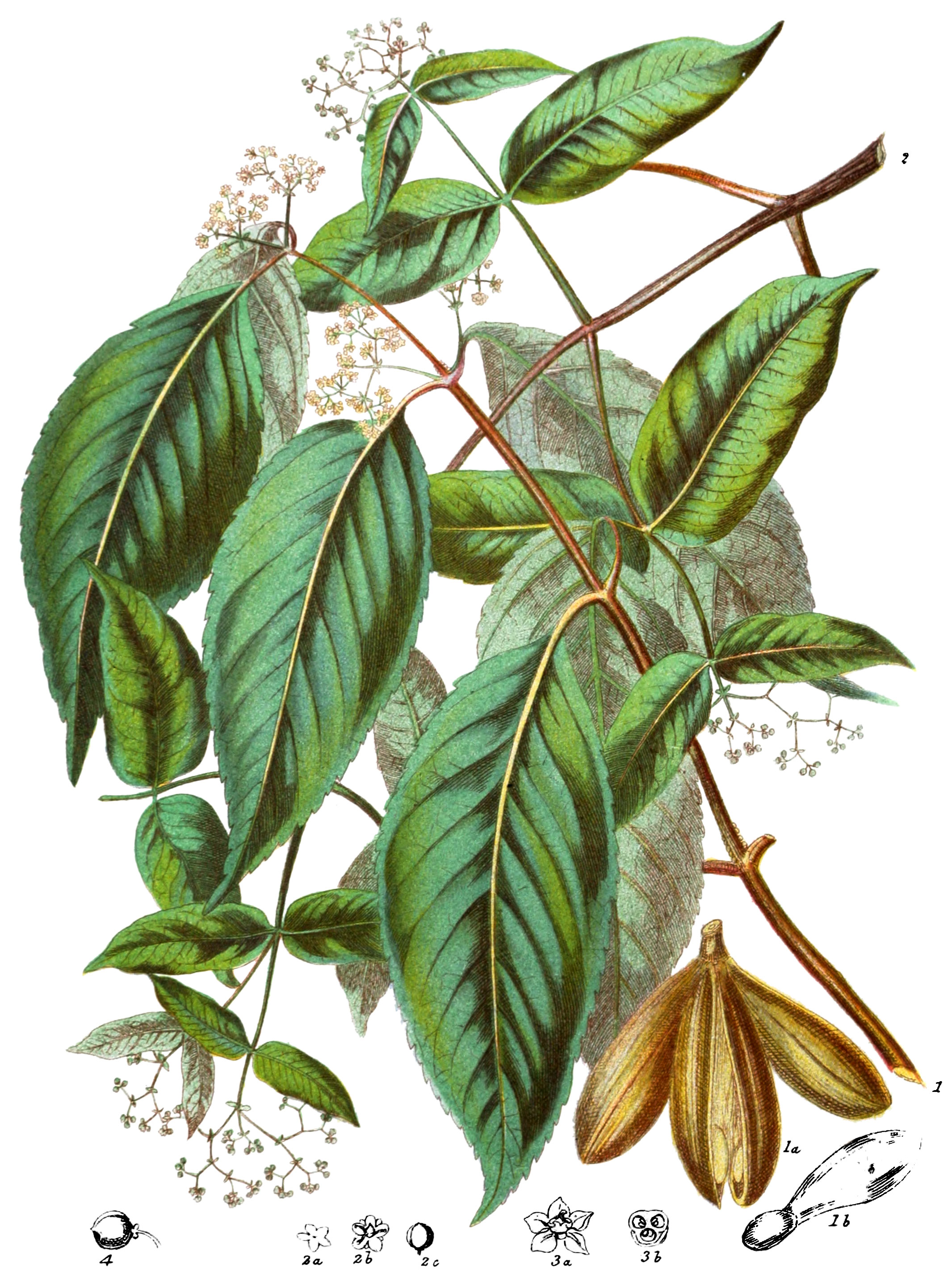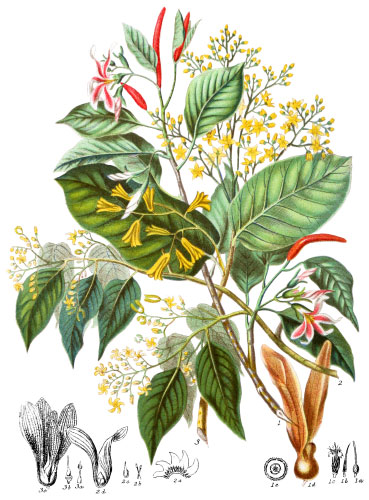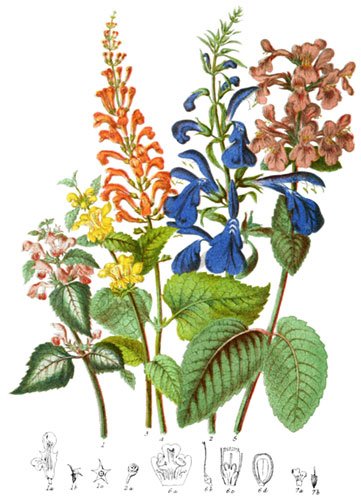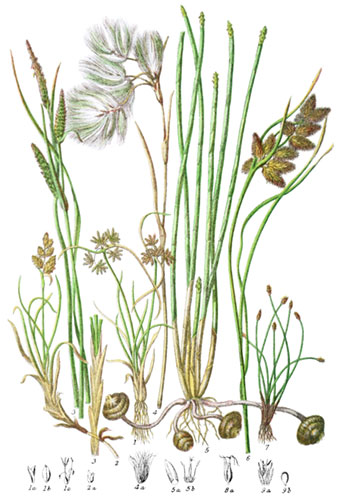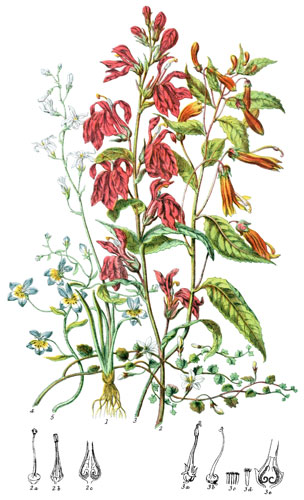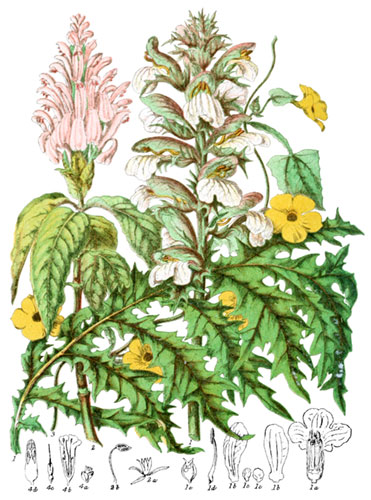Key characteristics
Arborescent or climbing shrubs, whichare almost always smooth. The leaves are opposite, simple, entire at the edges, or toothed, somewhat leathery, with small stipules at the base soon falling off. The flowers grow in clusters from the base of the leaf-stalks. The flowers are small and inconspicuous: the sepals of the calyx are five, minute, combined at the base, persistent: the petals are five, partly folded over each other in the bud. The stamens are three; the filaments are wide at the base, and cohere to form a thick disk around the ovary; the anthers open transversely at the point. The ovary is free, partly concealed within the disk of the filaments, three-celled, surmounted by one stle, and either one or three stigmas. The fruit consists either of three dry carpels, as in Hippocratea, or of a berry with one to three cells as in Salacia; the seeds are attached to the axis of each cell, in pairs; in some instances they are winged.
The winged fruit of some species connects this Order with Malpighiaceæ; there are also some affinities with the Spindle-tree tribe.*
The fruit of some of these plants contains oil.
Select plants in this order
Not all plants listed are illustrated and not all plants illustrated are listed.
- Hippocratea was so named by Linnæus in memory of Hippocrates, a descendant of Esculapius, and the renowned founder of a scientific school of medicine if Greece, 2300 years ago. He was deeply studios of natural history, and having travelled through a great part of Asia, the genus of plants selected to bear his name is not inappropriate.
- Hippocratea arborea (1) has a slender stem with smooth brown bark; the young week branches are usually disposed to climb over trees; the flowers appear in July; the fruit does not ripen until March; two seeds lie in the top of each carpel, and have a long thin wing extending to the base.
- H. indica extends in Bengal as far as the mountains at Monghyr.
- H. comosa, the wood almond of the Antilles, bears thick clusters of small flowers on fine feathery branches; the seeds are oily, of sweet, pleasant flavour, and are much esteemed; the flowers have a bitter taste, and are said to be used as a remedy in fever.
- The seed vessels of H. velutina are clothed with a velvet-like down. The flowers of one species are extremely fragrant. The manner of growth of these plants varies much.
- H. volubilis twines and twists its branches in knotted curles over other trees.
- H. Schimperiana of Sierra Leone grows stiff and straight, the opposite branches forming right angles with the stem.
- Tontelea scandens (2) was discovered by Aublet, near the River Pinemari about a hundered miles from the coast of the Pacific: it spreads its long branches and tough leaves over lofty trees, sending out roots from its branches; the small green flowers are of very insignificant appearance. Several kinds of Tontelea in Brazil are said by Martius to have a sweet, muscilaginous fruit.
- Salacia prinoides (4) has a small, eatable, pulpy fruit; that of S. pyriformis, of Sierra Leone, is much larger, and is also eaten by the natives.
- Several species of Salacia belong to the same regions of India as Hippocratea, and some extend to the Burmese country and the Malay Isles.
- Johnia coromandelliana produces an eatable berry of agreeable flavour.
Locations
The chief portion of this Tribe belongs to South America; a few species are natives of Africa and the Mauritius: some grow also in the Peninsula of India, but none have been discovered in the northern provinces.
Legend
- Hippocratea arborea, Tree Hippocratea. Hindostan.
- Seed-vessels.
- Winged Seed.
- Tontelea scandens, Climbing Tontelea. South America.
- Calyx.
- Flower.
- Fruit.
-
- Flower of Hippocratea Arnottiana.
- Section of Ovary. East Indies.
- Fruit of Salacia prinoides. East Indies.
*The Spindle-tree tribe was not in either of the original two volumes.
Explore more
Posters
Decorate your walls with colorful detailed posters based on Elizabeth Twining’s beautiful two-volume set from 1868.
Puzzles
Challenge yourself or someone else to assemble a puzzle of all 160 botanical illustrations.
